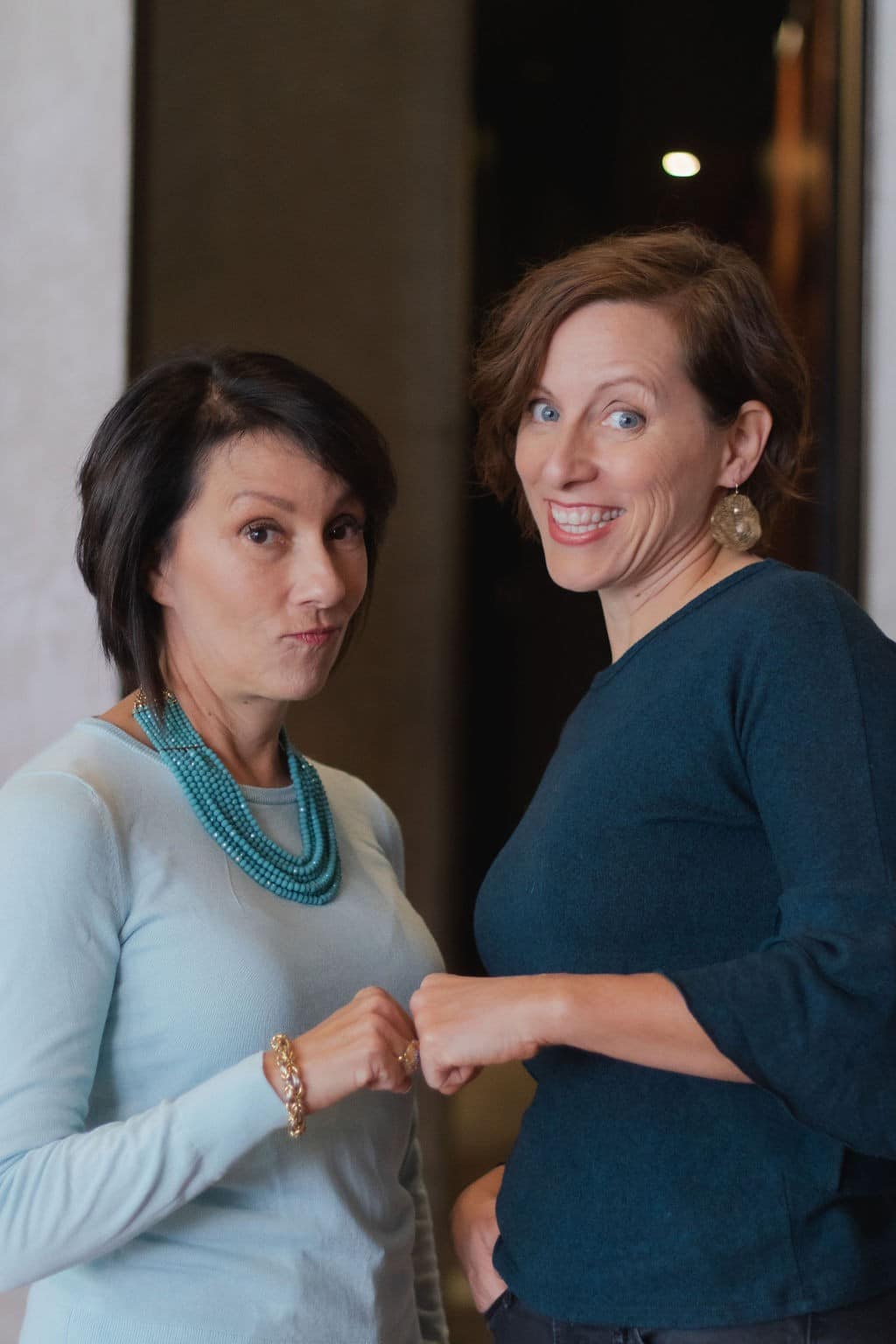Building software is a creative endeavor that requires in-depth industry knowledge and long-term product vision. But managers are always concerned that talent attrition is lurking just around the corner. With it come the negative impacts of roadmap delays and increasing tech debt, as well as the loss of intellectual capital such as industry and product-specific knowledge. And no amount of documentation will fully replace the contributions of the A-list talent on the team. So managers, listen up. You need to create teams filled with diverse personalities. Here, you learn how to manage diverse personality types effectively by:
- 1. Understanding individual team members, how they present themselves, and why.
- 2. Using this knowledge to guide your actions, when it comes to motivating individuals.
This article is part of a four-piece series by Brilliant People‘s Founder & CEO Whitney Nelson, and Brettnē Shootman, the Director of Content & Communications. You can check out more complementary content such as:
Understanding Individual Team Members and Why They Show Up The Way They Do
The four main personality types show up very differently in the world. Their motivators, priorities, strengths, and struggles differ significantly. In fact, they look at the world through different lenses. Therefore, the manager who attempts to manage them as if they are all alike is just asking for problems. And lots of them. Instead, managers can turn to a model like Everything DiSC®to learn to communicate better with the different types. DiSC offers a personality assessment and personal development learning experience that measures preferences and tendencies.
Participants receive personalized insights that deepen their understanding of self and others, making workplace interactions more enjoyable, effective, and productive. At Brilliant People™, we prefer DiSC™ to other models because it’s reliable, used all over the world, and is easy to remember! Let’s take a look at the four main DiSC™ personality types and how they typically present.
Dominant or ‘D’ Personality Types are usually direct, results-oriented, and competitive. Their motto is “Just do it.”
They often come across as abrupt and domineering, but behind the brashness is a true desire for results. They will see things through to completion because they want to win.
However, the D-types can hinder a team if they focus too much on their own personal goals instead of helping the team to achieve.
Influencer or ‘i’ Personality Types typically show up as outgoing, positive, and collaborative. Their motto is “Have fun doing it”.
The influencers have a knack for rallying people around a cause. They enjoy bringing teammates together to collaborate and to celebrate. In addition, they are especially good at generating new and innovative ideas because they think in terms of possibility.
The i-types can put a project in jeopardy, however, if they spend too much time in creation mode and not enough time in completion mode.
Conscientious or ‘C’ Personality Types are normally identified by their attention to detail, logical thinking, and composure. Their motto is “Do it right”.
The Conscientious types are diligent and take their work very seriously. They work to ensure that all details are correct and they don’t let emotions get in the way. In fact, they often come across as unemotional, but don’t let this fool you. They care very much about what they produce; just not the office politics.
The C-types can create difficulties for the team, however, when they spend too much time perfecting a particular version of their work. They can easily get lost in analysis paralysis.
Steady or ‘S’ Personality Types are known for their cooperative and supportive demeanor. Their motto is “Do it together.”
The Steady types are typically the quiet, behind-the-scenes worker bees. They don’t vie for attention. Instead, they want to do their work well and see everybody come together as a team. They are great at mediating and working one-on-one with teammates. At the same time, they are also skilled at collaboration and are often the glue that holds the team together.
Just be aware that the S-type often struggles in a high-stress environment or one with constantly moving variables. They don’t like change and may hold up progress if they haven’t bought into a new idea or process.
As you think about your current team, do you recognize any of these personality types? Rather than passing judgment or becoming frustrated with how their workstyles differ from yours, focus on matching their skill sets to the situations and teams where they can be the most productive.
Mix-and-Match Diverse Personality Types for Performance
To maximize team effectiveness, help the team embrace each other’s differences and use them to fill each other’s gaps.
The Dominant or “D” types typically want to lead the charge. Their competitiveness can be used to drive the team forward and to focus on team results. Pairing them with the C-type can help them make sure they aren’t hurrying a product out the door without the proper due diligence. However, the D-type can reciprocate by helping the C-type stick to deadlines.
The Influencer or “i” types are usually very social and outgoing. They should always be called into action when there’s a need to get more people behind an initiative. Their ability to connect with people on a personal basis makes them very good at motivating and collaborating as well. Utilize their people skills to help smooth over any organizational changes that the S-types might be worried about. In addition, they can also help any personality type feel like they are a part of the group.
The Steady or “S” types are great at supporting teammates and helping to mitigate problems. They’re typically good at mediating and making sure each side has an opportunity to share their viewpoints. They’re also steady and reliable. They’re loyal teammates who enjoy collaborating. They are a good balance to any of the diverse personalities, as long as they are encouraged and given the time to speak their mind freely.
And as the name suggests, the reserved Conscientious or “C” types are invaluable for risk assessment. Their cautious approach means fewer mistakes. Adding them to the mix of D or i-types will help ensure that ideas flung on the wall are vetted before anyone takes the plunge and wastes time, energy, and money.
In addition, the D and i- types can align themselves with the Steady or “S” types to leverage their calm and supportive approach to project completion.
And, partnering up the Dominant and Conscientious types is great for problem-solving. They bring together the ability to lead a charge, check off all the boxes, and provide results.
Of course, these are just a few examples of how the DiSC™ personality types show up at work and how they can utilize each other’s strengths to make the team stronger. To gain even more insight into team members, a manager can use Everything DiSC™ on Catalyst. This platform houses team members’ personality assessments with in-depth information on aspects of motivations, priorities, and how they approach conflict. With this bird’s eye view into each direct report, a manager can quickly learn to speak each individual’s personality language to improve communication and build trust.
But one of its most valuable aspects is the comparison report. This feature allows individuals the opportunity to compare their own personality style with another coworker in a side-by-side comparison view. Imagine how impactful this type of information could be in your next 1:1 meeting and to help determine how to get the most out of each team member.
The Role of Empathy in Building a Successful Diverse Team
The idea of empathy playing a major role at work is being talked about a lot. And yet, as much as people want others to be empathetic with them, they often don’t know how or are unwilling to show empathy themselves. This is because we typically only have empathy for people who are like us, or who we assume are like us because they look like or act like us. It’s the manager’s responsibility to help the team move beyond this superficiality by setting an example of what empathy will look like on the team.
The best way for a manager to begin is by being authentic and transparent and encouraging everyone to get to know each other better personally. People will sometimes balk at sharing personal info at work, but the reality is that when you can help people share things like their personality type, past experiences, backgrounds, cultures, and strengths, they become much more willing to share their mistakes and failures. When team members get to know themselves and their colleagues better, empathy and camaraderie have the ability to grow organically.
You see, understanding comes first, and from there, empathy takes root, forming the solid foundation for trust. As teammates uncover shared experiences and viewpoints, it’s like building bridges that connect people and create unbreakable bonds. When we really understand where our teammates are coming from, working together becomes a whole lot easier and more productive. It’s like switching gears from “what I want” to “what the team needs” – a game-changer for seamless collaboration among diverse team members. This is the trust-building journey that leads to high-performing teams.
Curious to continue the conversation? Drop Ubiminds a line.

Brettnē began her career in public education; teaching students, writing district-wide curriculum, and facilitating Covey training for educators. She has since created curriculum for private schools and nonprofits.
Whitney Nelson is the founder and CEO of Brilliant People™. She’s a dynamic leader with a background in design, marketing, leading teams and leadership development.


